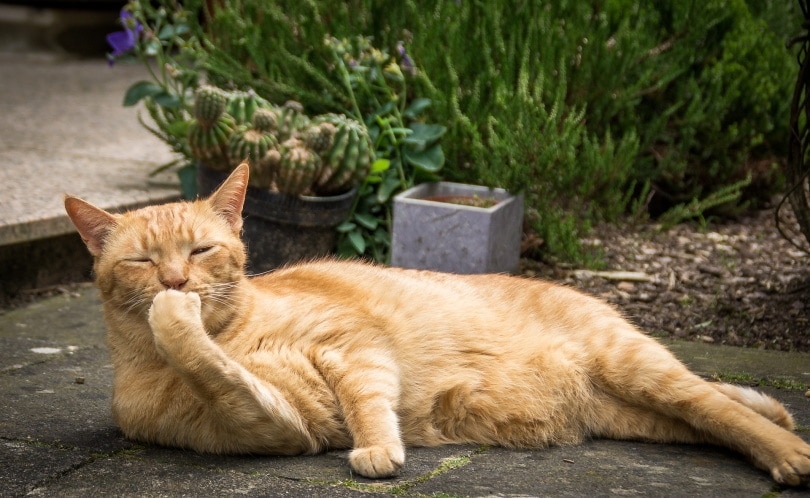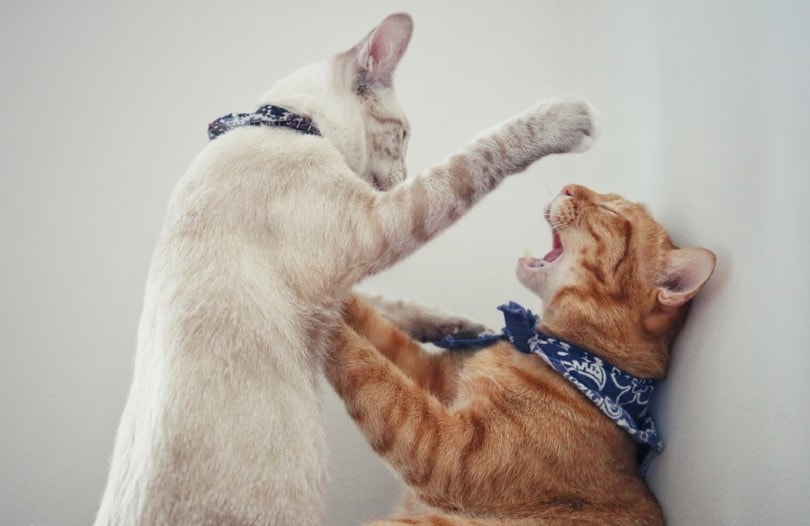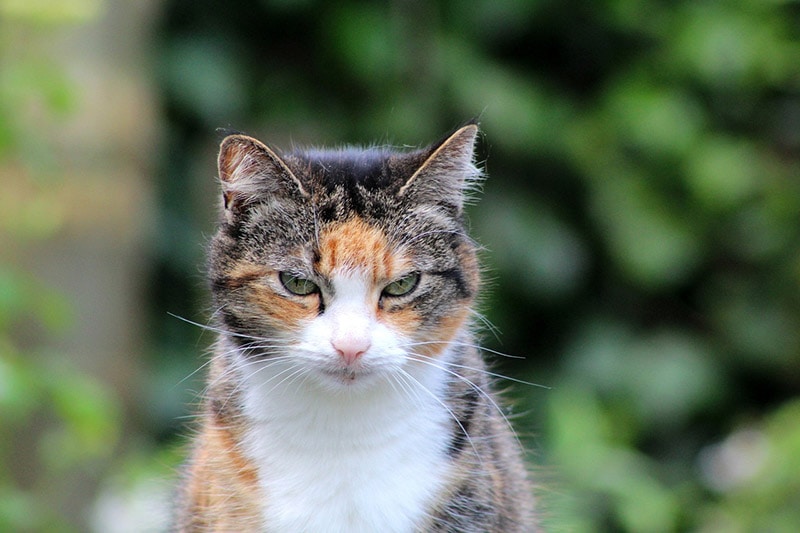Serval Cat vs Savannah Cat: Visual Differences & Overview (with Pictures)
Updated on
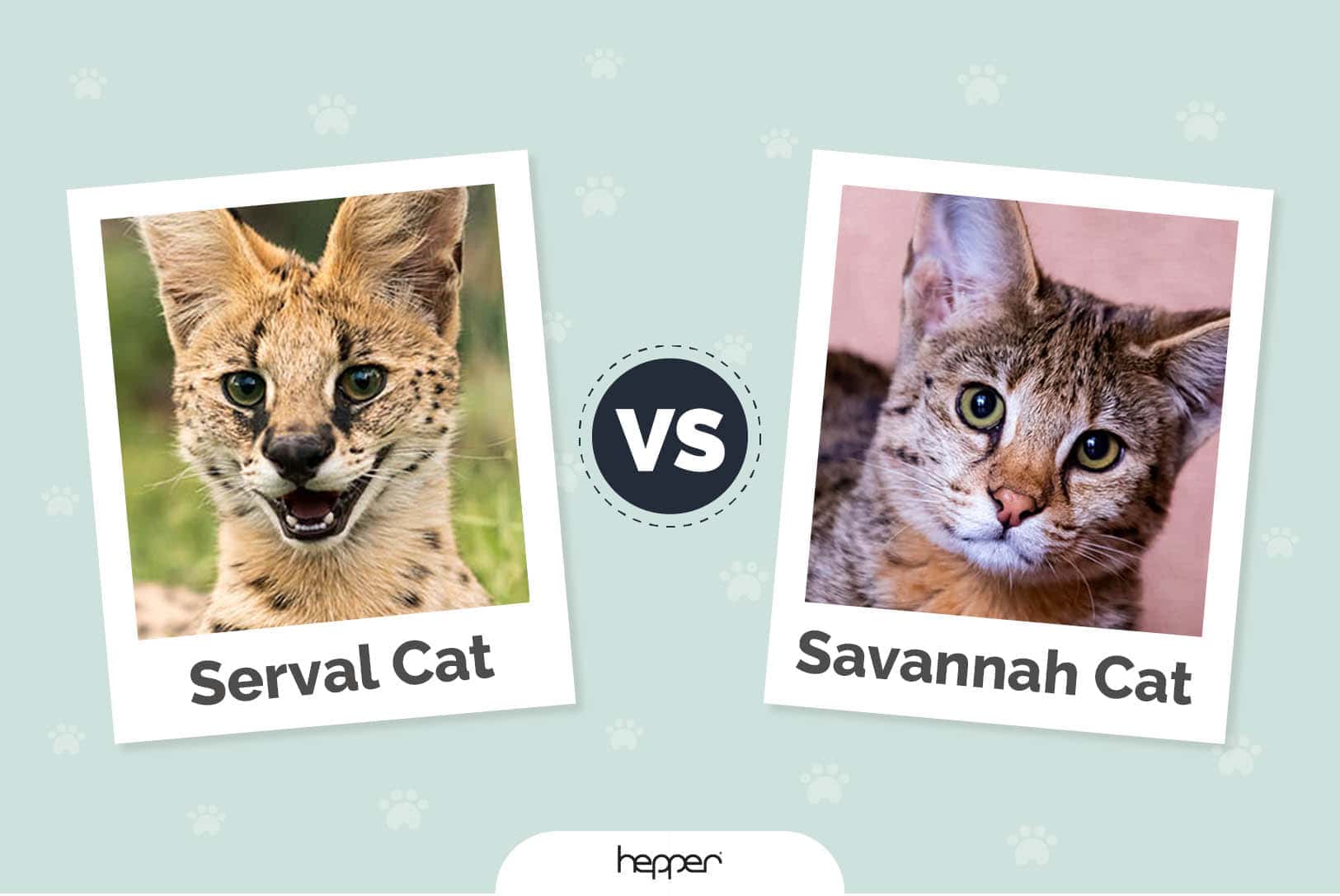
Click to Skip Ahead
The personalities of the two felines differ sharply. The Serval steers clear of humans and will take to hunting at night to avoid them. On the other hand, the Savannah Cat is an affectionate animal with the street smarts of their wild counterpart. Unlike other pets, you may find that you can’t own a Serval or Savannah, depending on the laws in your area.
Visual Differences
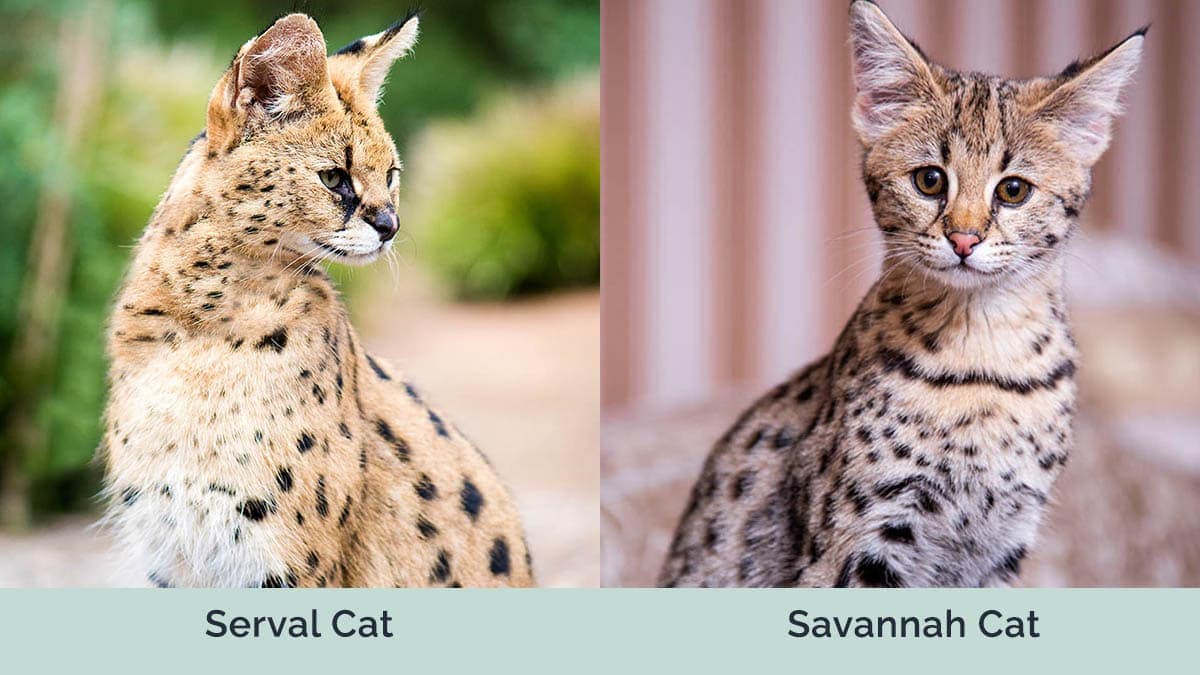
At a Glance
- Origin: Throughout sub-Saharan Africa
- Size: 20–40 pounds
- Lifespan: Up to 22 years in captivity (10 years in the wild)
- Domesticated?: No
- Origin: United States
- Size: 12–25 pounds
- Lifespan: 12–15 years
- Domesticated?: Yes
 Serval Animal Breed Overview
Serval Animal Breed Overview

The Serval differs from many felines since they like water. It’s an essential part of their habitat preferences. The International Union for Conservation of Nature and Natural Resources (IUCN) considers them a species of least concern due to their stable numbers in the wild. Like many felines, the Serval is a solitary animal, except during the breeding season. Their ranges in the wild average 4.5 square miles.
Characteristics & Appearance
The Serval is a long-legged, medium-sized cat. Their tan body is covered with dark stripes and spots that provide excellent camouflage in the tall grasses of their habitat. The pattern varies with the individual. They have a white muzzle with relatively large ears, and their head appears small for the size of their 24-inch body.
Uses
The Serval is somewhat elusive, which isn’t unusual for an animal hunted for their pelt. However, it’s worth noting that this trade has declined in recent years. The Serval’s secretive nature keeps them from becoming much of a pest as far as livestock is concerned. The Serval may take the occasional chicken or pet.
Their primary threat is habitat loss, which can potentially increase the risk of conflict. As a predator, rodents make up to 94% of the Serval’s prey. Nonetheless, it’s not an essential factor in pest control because of where this cat prefers to live.
Savannah Cat Overview
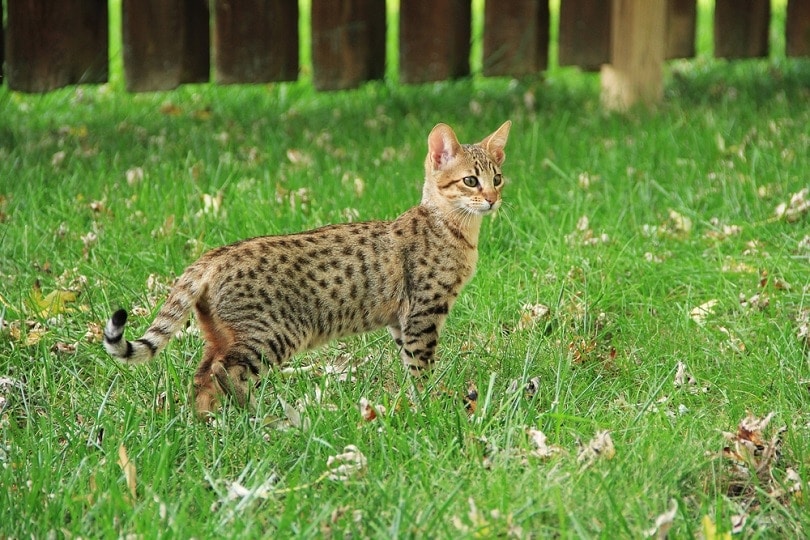
The Savannah is relatively new to the show circuit, with The International Cat Association recognizing the breed in 2012. Their exotic appearance and intelligence have endeared them to many enthusiasts. Nevertheless, you’ll find it challenging to find a Savanna Cat, with prices starting at four or even five figures. One look at their gorgeous, wild coats, and it’s easy to see why.
Characteristics & Appearance
The Savannah is definitely in touch with their wild side with their sleek body and long tail. They’re a curious and determined animal with a strong prey drive. That makes them unsuitable for households with small animals as pets. As you may expect, this cat is a jumper that has an adventurous streak. Interestingly, they’re fascinated with water, which is a throwback to their ancestry.
Uses
Savannahs have several desirable qualities as pets. They’re affectionate with their owners and quite healthy. They don’t shed as much as many other breeds. They have a long lifespan, given their adult size. The Savannah matures slowly, which isn’t unusual. While they can be loving, they enjoy running and climbing. They are energetic and prefer exploring to cuddling up on the couch.
 What Are the Differences Between the Serval & Savannah Cat?
What Are the Differences Between the Serval & Savannah Cat?
The differences between the Savannah and Serval are primarily related to their size and personality. The Savannah is smaller, a trait encouraged by selective breeding. They are also more accepting of people, particularly if socialized early in life. You may even find that the Savannah is almost dog-like in its behavior.
On the other hand, the Serval is a wild feline with the personality to match. They prefer to keep to themselves and avoid contact with people and other animals. They’re not very vocal, and their primary form of communication is scent-marking their territory.
Both cats are high-energy felines, and you may notice several similarities in the personalities of the two animals. The Serval and Savannah Cat are talented hunters, but Servals are seldom kept as pets since they’re usually afraid of humans.
Which Breed Is Right For You?
It’s imperative that you check the laws in your area about the legality of owning either a Serval or Savannah Cat. They are complicated, with subtle variations. Some states, such as Arizona and Hawaii, outlaw the Serval outright. In other places like Montana and Florida, you can own one with a permit. You’ll also find restrictions on the generation of the animal.
For example, California bans first-generation Savannahs, whereas Iowa puts the fourth generation as its standard. It’s essential to investigate whether domestic cat hybrids are allowed, too. Some states put conditions on the specific ones or the generations. You’ll likely find more luck with a Savannah Cat versus the wild Serval. That fact alone can determine which breed is right for you.
See also:
- 16 Largest Pet Cat Breeds: From Around the World (With Pictures)
- How Much Does It Cost to Own a Cat?
Featured Image Credit: (L) Fion Ayerst, Shutterstock | (R) Kolomenskaya Kseniya, Shutterstock


